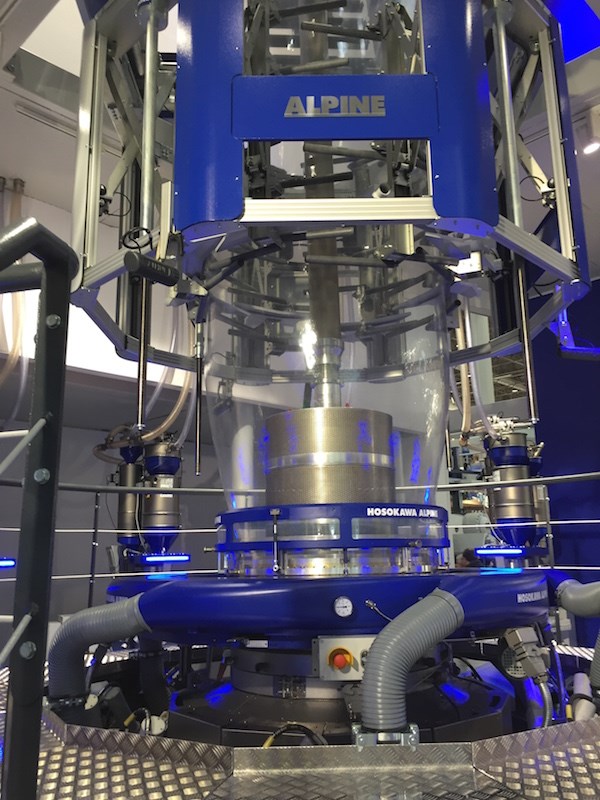Alpine Kicks Off K With Lots of Layers
Layers are great with chocolate cake. And blown film too. Hosokawa Alpine ran what鈥檚 believed to be a show first: an 11-layer line producing nylon-based barrier film.
Layers are great with chocolate cake. And blown film too. Hosokawa Alpine ran what’s believed to be a show first: an 11-layer line producing nylon-based barrier film.
Over the past few K Shows most suppliers have stuck with five-layer structures. Back in 1998, Battenfeld Gloucester, now part of Davis-Standard, ran a seven-layer nylon-barrier blown film line at K. At K 2010, Reifenhauser ran a nine-layer line. The system Alpine fired up on Day One of K 2016 featured 11, grooved-feed 65-mm, 32:1 L:D water-cooled extruders and a 560-mm X Die, as well as a new version of its V air ring designed to maximize output.
It was equipped with a film-stretching unit built into the nip. The line offers “infinite flexibility by allowing processors to bundle 11 equal layers” in the configuration of their choosing, says Dave Nunes, president of the company, whose U.S. operation, Hosokawa Alpine American, is based in Natick, Mass.

Related Content
-
Roll Cooling: Understand the Three Heat-Transfer Processes
Designing cooling rolls is complex, tedious and requires a lot of inputs. Getting it wrong may have a dramatic impact on productivity.
-
Single vs. Twin-Screw Extruders: Why Mixing is Different
There have been many attempts to provide twin-screw-like mixing in singles, but except at very limited outputs none have been adequate. The odds of future success are long due to the inherent differences in the equipment types.
-
How to Select the Right Cooling Stack for Sheet
First, remember there is no universal cooling-roll stack. And be sure to take into account the specific heat of the polymer you are processing.








